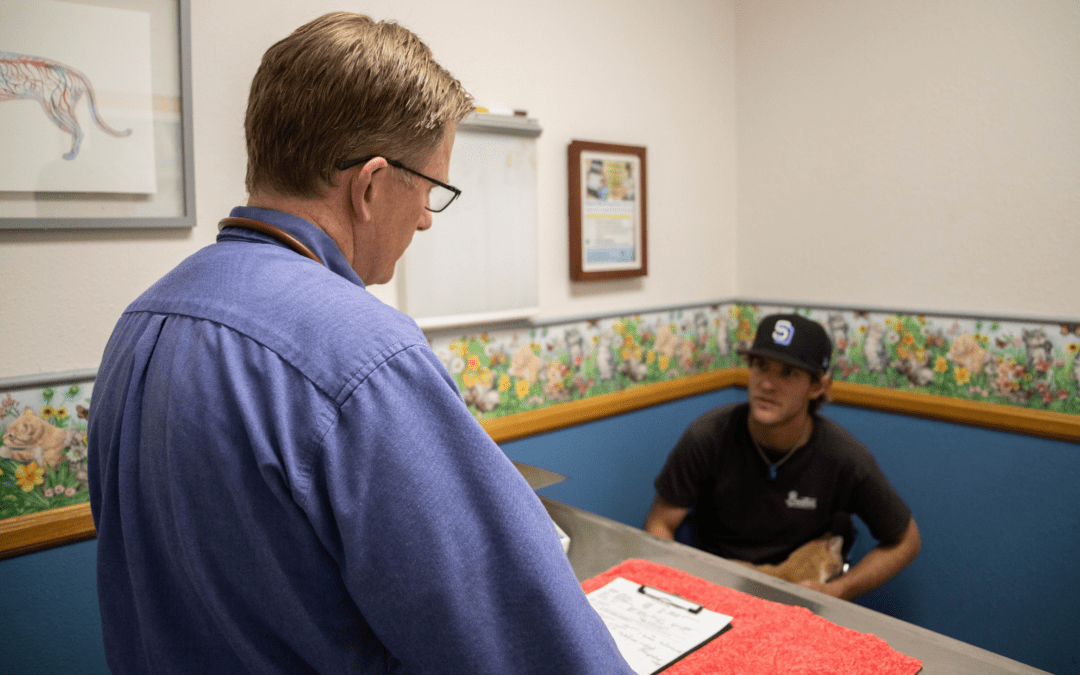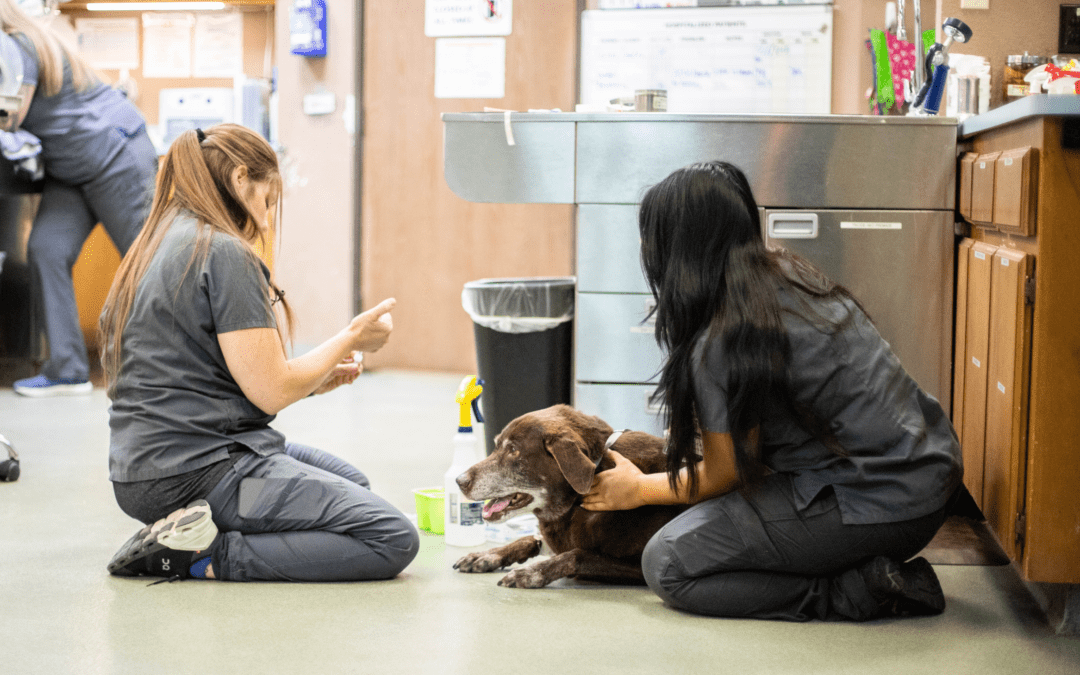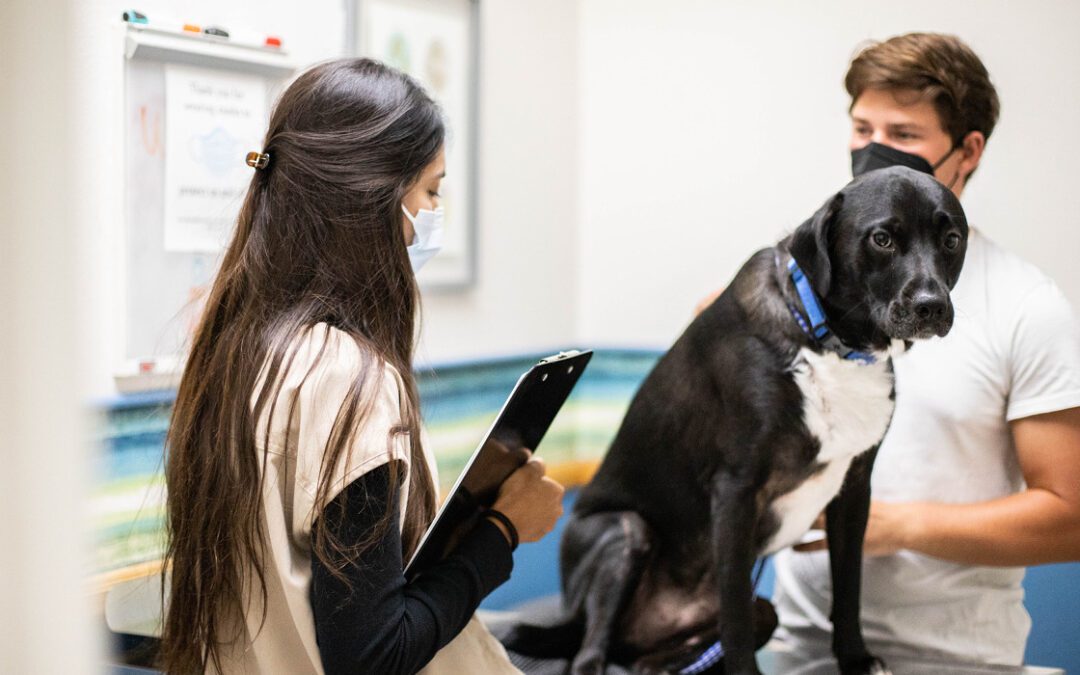Another client is upset on the phone. The voice comes through immediately after the CSR picks up – “Hello? I’ve been waiting out here for 20 minutes. Where is my dog?”
Your customer service representative scrambles to find out which dog, and what the status is. She sees in the client record that she had left a voicemail 20 minutes ago that the doctor recommended the dog stay overnight. She had already forgotten she’d made that call.
“A voicemail? Well, why didn’t you text me?”
Introducing Asynchronous Communications for your Staff
When COVID-19 began, PetDesk saw an astonishing spike in practices opting to use Two-Way Messaging. The number of practices using the tool more than doubled, and the number of messages sent per practice more than tripled. Feedback clearly indicated that Two-Way Messaging has been a key way practices mitigate the phone fatigue that came with curbside. But why? How?
A phone call is an example of synchronous communication: both parties are actively participating within the same window of time. It requires focused presence and attention for a period of time.
Sometimes synchronous communication is necessary because the topic is sensitive. Payment, positive test results, and angry clients are good examples of this. But what about all the other calls? Does a client really need to call when they arrive? Do you need to leave another voicemail about another negative fecal?
Text messages and emails are asynchronous. While response times can impact clients and staff, it is still the best way to save yourself time on lower-stakes communications. Even if they do not respond, clients read a text message. They often ignore a voicemail.
Ask yourself: what are calls that your staff makes that end in voicemails that do not require a response? Or what about coordinating a drop off and pick up? How many of these sorts of phone calls do they make or receive in an hour? These can be text messages, and the time savings will add up quickly.
The Benefits of Asynchronous Communications for Your Clients
Like most of us, clients are acclimated to using text messages to communicate with their friends and family about various topics. Additionally, clients – especially those under 40 – increasingly expect businesses to be able to communicate via text message.
If you’ve been in the industry for a while, you’ve probably felt the increase in voicemails that you and your staff leave. If a client doesn’t have your number in their phone, how can they tell it isn’t a spam call? One study found that 75 percent of millennials avoid phone calls because they’re time-consuming. So why call as a first attempt?
You may now be thinking of your loyal clients who would recoil at the idea of not receiving the phone call the day before an appointment. That’s why you’re not getting rid of your phone.
Finding the Balance
Optionality of communication is the new way businesses relate to customers. At restaurants in cities today, you’ll find something odd: some offer pick up services through a company like DoorDash, some offer pick up services if you call, and some have an online portal where you can send in your pick up order. An increasing number are doing all three, plus more.
Restaurants – which operate with thin margins – have recognized the need to give optionality to their clients. They’ve honed processes to ensure all of these orders are recognized, prepared, and delivered to whomever comes to pick it up so that every client has a good experience whether they ordered with an app, called, or went online. Their processes are so tight, they often prefer an online order to a phone call.
Granted, veterinary practices are not restaurants. But restaurant guests are the same as veterinary clients, by and large. As you consider the learning curve to create and implement new processes associated with modern technology, keep in mind that clients and staff have likely ordered pick up from a restaurant recently. They’re both coming to your business with expectations.
As you steer your practice through the future, consider what options are available to your clients at other businesses, then look at your own. You may find some easy wins that can save you and your clients time and improve everyone’s experience.






